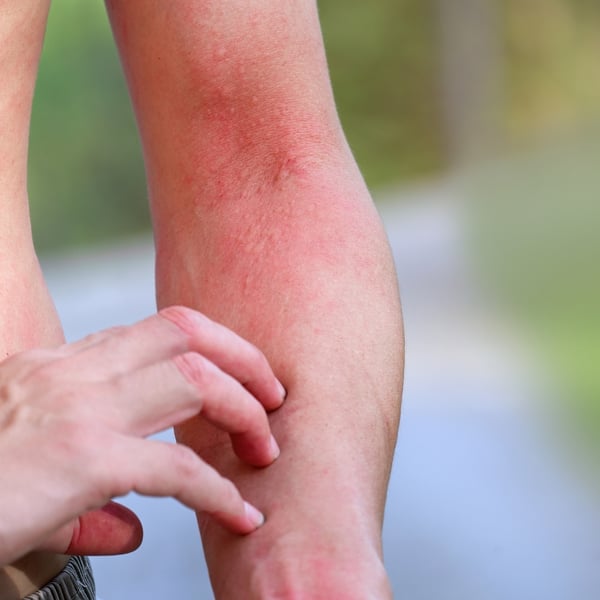
Summer is a time for outdoor adventures, beach days, and sunbathing. However, along with the joys of summer can sometimes come the unexpected rash. The worst part is that you often have no idea where you got it, why it’s happening, or where to start. We are here to help by offering a guide to the most common summer rashes we see as dermatologists.
Heat Rash (Miliaria)
Heat rash typically appears as small, red, itchy bumps on the skin. It occurs when sweat ducts become clogged, trapping sweat beneath the skin. If you believe you have a heat rash, keep the affected area cool and dry. Avoid tight clothing, use lightweight fabrics, and apply soothing creams or ointments containing calamine.
Sunburn
Sunburn presents as red, tender skin that may blister in severe cases and is caused by, you guessed it, the sun! If you forgot to apply and reapply the sunscreen and now have a sunburn, apply cool compresses, moisturize with aloe vera gel, and take over-the-counter pain relievers if needed.
Poison Ivy, Oak, and Sumac Dermatitis
Redness, itching, and blistering are common symptoms after poison ivy, poison oak, or poison sumac exposure. The rash is caused by an allergic reaction to the oil on their leaves. If you believe you have come in contact with one of these plants, wash the affected area immediately, use over-the-counter creams containing hydrocortisone, and take antihistamines to alleviate itching.
Swimmer’s Itch (Cercarial Dermatitis)
Swimmer’s itch manifests as red, itchy bumps or blisters and is caused by an allergic reaction to parasites in contaminated water, commonly fresh water like rivers and lakes. If you develop a rash after swimming, rinse off immediately after swimming, apply cool compresses, and use over-the-counter anti-itch creams.
Insect Bites and Stings
Redness, swelling, and itching are common after insect bites or stings. Some individuals develop hive or welt like bumps after being bit by certain insects. If you believe you have an insect bite or sting, clean the area, apply ice packs to reduce swelling, and use over-the-counter creams containing antihistamines or hydrocortisone. If you think the bite is spreading, mark the edges of the bite with a marker to watch for continued growth.
Do you have a suspicious rash and need help?
Forefront Dermatology and its Affiliated Practices are located coast to coast, with many locations offering appointments in days, not weeks. Find a location near you today.





